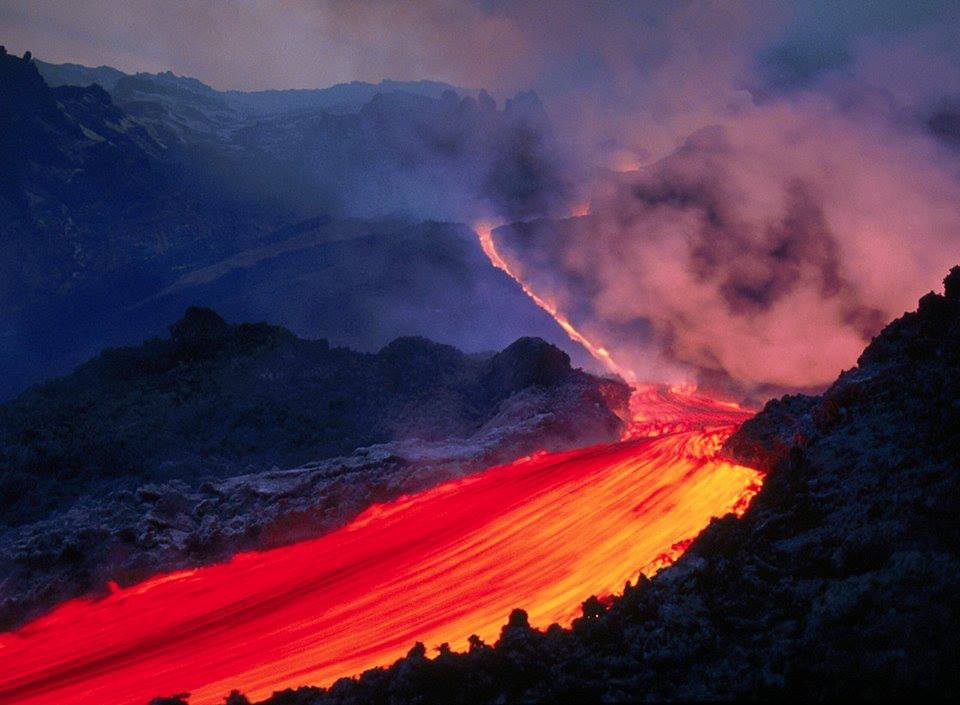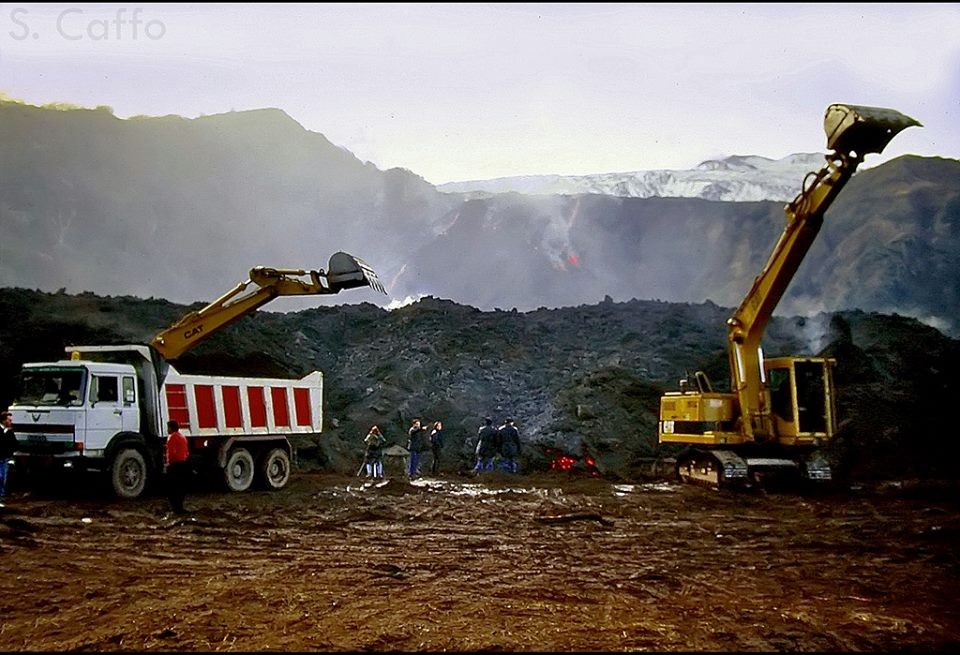The eruption of 1991-93, Etna’s last big eruption in the 20th century, began on the night of 14 December 1991, when an eruptive fissure opened up in the western face of the Valle del Bove, at around 2200 metres above sea level. The lava began to descend rapidly towards the bottom of the Valle del Bove, in its southern part, then advanced eastwards towards the steep slope of the Salto della Giumenta at an altitude of around 1300-1400 metres, where the Valle del Bove passes into the adjacent Val Calanna.
Given the rapid advance of the lava flow towards the town of Zafferana Etnea, the decision was made to build an embankment through Portella Calanna, the most eastern part of the Val Calanna. This barrier was erected perpendicular to the direction of the flow, with the aim of stopping it rather than diverting it somewhere else. The Italian Army and the Fire Brigade participated in the construction, as did private businesses. In the first three weeks of January 1992, the work continued to build an embankment 234 metres long and 20 metres high.
In mid-March, the lava touched the base of the embankment for the first time. The basin intended to “capture” the lava quickly filled up, allowing the lava to reach the crest of the embankment and begin to overflow on the afternoon of 8 April 1992. From here, the lava flowed quickly towards the valley, in the direction of Zafferana Etnea.
To win some time, desperate efforts were made to build a series of smaller embankments downstream and work began on a more articulated intervention upstream, with the aim of interrupting the lava flow at the source. For this reason, at first a series of tests took place in the Val Calanna, with the use of explosives on some small lava tunnels to see the effects.
The apparent truce lasted until 10 May, when the lava threatened Portella Calanna once more. The next day, Ballo and Sciara were evacuated, the districts closest to the danger of Zafferana Etnea. In the afternoon of 27 May 1992, the bank of the flow was blown up; the flow extended towards the artificial gorge built by the Army sappers, the most advanced fronts slowed down and Zafferana was saved. On 29 May, the whole tunnel collapsed and the lava began to flow to the surface, causing the lava downstream to stop completely. So the lava was no longer able to advance outside the Valle del Bove and it added to the previous fields until 30 March 1993, when this very significant eruption ended.